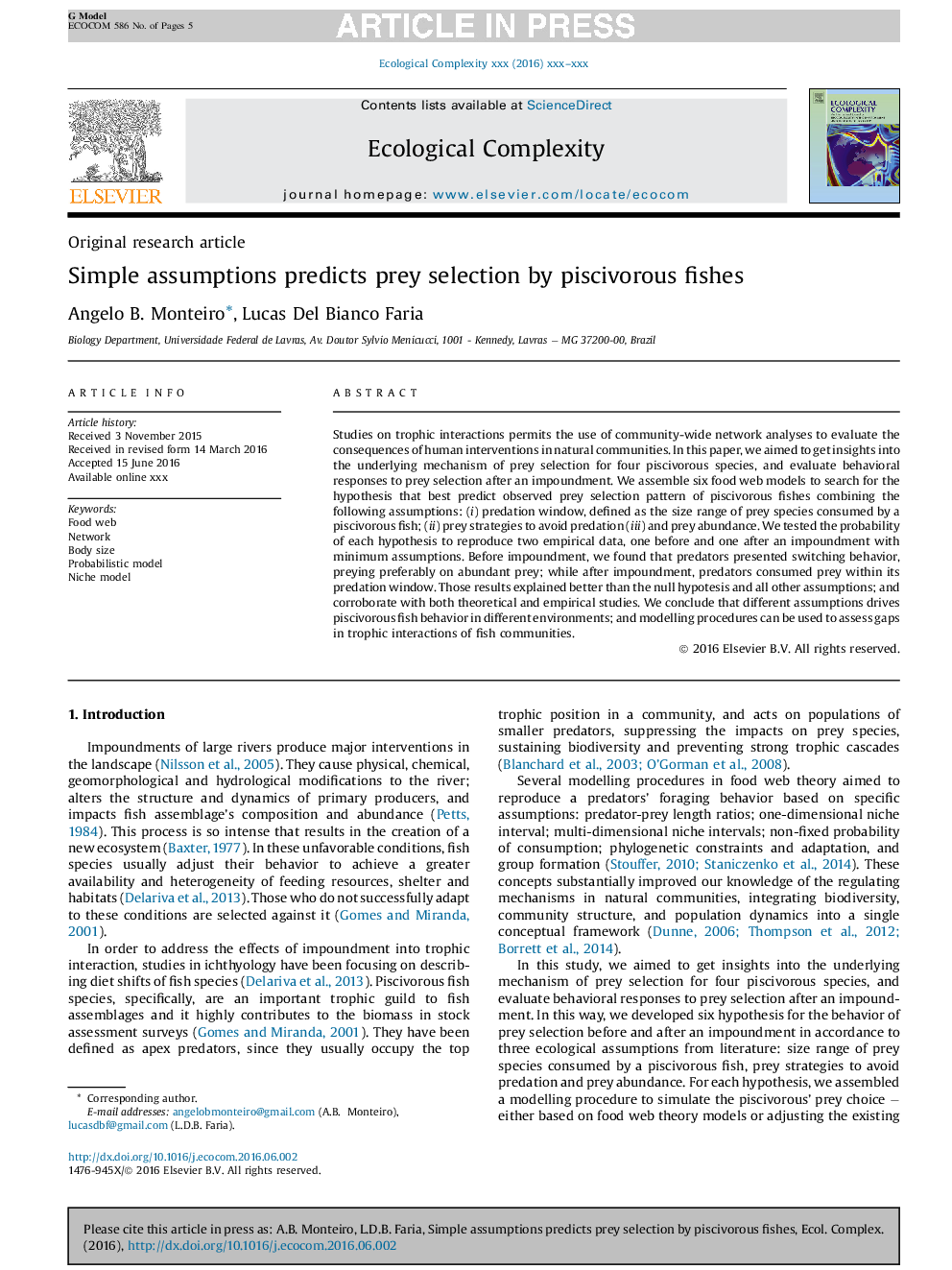| Article ID | Journal | Published Year | Pages | File Type |
|---|---|---|---|---|
| 8844891 | Ecological Complexity | 2016 | 5 Pages |
Abstract
Studies on trophic interactions permits the use of community-wide network analyses to evaluate the consequences of human interventions in natural communities. In this paper, we aimed to get insights into the underlying mechanism of prey selection for four piscivorous species, and evaluate behavioral responses to prey selection after an impoundment. We assemble six food web models to search for the hypothesis that best predict observed prey selection pattern of piscivorous fishes combining the following assumptions: (i) predation window, defined as the size range of prey species consumed by a piscivorous fish; (ii) prey strategies to avoid predation (iii) and prey abundance. We tested the probability of each hypothesis to reproduce two empirical data, one before and one after an impoundment with minimum assumptions. Before impoundment, we found that predators presented switching behavior, preying preferably on abundant prey; while after impoundment, predators consumed prey within its predation window. Those results explained better than the null hypotesis and all other assumptions; and corroborate with both theoretical and empirical studies. We conclude that different assumptions drives piscivorous fish behavior in different environments; and modelling procedures can be used to assess gaps in trophic interactions of fish communities.
Related Topics
Life Sciences
Agricultural and Biological Sciences
Ecology, Evolution, Behavior and Systematics
Authors
Angelo B. Monteiro, Lucas Del Bianco Faria,
